+ By Brenda Wintrode
Julia Gibb leans against a white wall near the hors d’oeuvre table in the small back room of a Maryland Avenue art gallery. Three guests form a half circle around the artist and cofounder of Future History Now (FHN), an art education nonprofit dedicated to including underserved youth in public art projects. Visitors have already seen her husband, street muralist and FHN cofounder Jeff Huntington, in the front room surrounded by the works of his first solo gallery show in Annapolis since moving here 17 years ago. Tonight, their expansive creative life aligns with the pragmatic; Huntington’s works are for sale. The humble, art-filled life the couple shares does not pay for itself.
Lighthearted buzz and social banter fill the bright space. The couple’s friends and colleagues and businesspeople arrive to show support. Politicians and the politically connected familiar with FHN’s work enhancing the city’s walls have stopped by. A hired guitarist and vocalist fills what little space remains with samba music, and the room is getting smaller. Gibb heads toward the door for a breath of air.

The pair just completed their thirteenth Annapolis FHN mural this summer with children from the Stanton Center. The projects expose children to the planning, problem solving, and process of installing street art. The Calvert Street mural honors St. Anne’s Cemetery and the location of the old Star Theater, the city’s only African American movie theater during segregation. It also marks the area where a group of African American-owned businesses once flourished. Gibb took inspiration from the seventeenth-century Dutch masters who painted “vanitas” style, a still life genre that celebrates living things while acknowledging the inevitability of death. The Stanton Center children painted colorful native flowers to balance the black-and-white images of the disappeared historical elements.
“Star Theater, to me, is about educating the community that there was a thriving culture there. It’s something to be proud of, and, for the older people in the community, maybe a little bit of healing to recognize that this amazing thing was here,” says Gibb.

FHN researched the story of the theater site with a city historian and community stakeholders before wetting a brush. Huntington never wants to create what he calls “plop art.” “We want to engage the community and approach it in a mindful way so that the community can properly have ownership or some stake in it, as opposed to a famous street artist flying in— plop—doing a six-figure mural, and leaving,” he says. He adds that those murals are the first to get tagged with graffiti.
FHN board member Mike Paredes believes everyone in the community deserves to have art in their lives. “Art is not something just for the elite, but rather, a necessity,” he says. Huntington recalls painting boarded windows and doors with children from Newtowne 20 and Woodside Gardens in a section of Newtowne 20 that functions as a play yard. “One afternoon, with their participation, with them doing most of the work, it went from looking like Beirut to looking like this outdoor community gallery,” Huntington says. “Because Annapolis is so preserved, it might feel to people like there’ s not a way to make their own presence known, to actually leave a mark on the city,” says Gibb. “Murals are a nice way of literally letting someone make a mark.”
As much as she appreciates everyone coming to Huntington’s show, anyone who knows Gibb understands that she prefers the solitude of the couple’s cottage to a crowd, the company of her cats to admirers, and the serenity of her flower and vegetable gardens to a glamorous night downtown being in the center of what some might consider an enviable scene.

Gibb experiences intense periods of anxiety and depression, something she attributes to a delayed attention deficit hyperactivity disorder (ADHD) diagnosis. Says Gibb, “ADHD makes me feel like there’s always this cloud of disaster looming because I forgot to do something.” She and Huntington admit they struggled in their youth, especially with high school academics. Gibb says she could have benefited from activities like FHN to show her what was possible.
She walks across the gallery’s hardwood floor, past Huntington. He stands in black-on-black checkered Vans, dark blue jeans, and a geometrically patterned shirt, not unlike the style of his street murals. Attendees ask Huntington how he creates layered optical illusions with painter’s tape and paint. He explains his methods while gesturing with one hand, a glass of something sparkling in the other. A wave of his salt-and-pepper hair crashes over his black-rimmed glasses.
The gallery opening is an end result, signifying the glamorous arrival of an artist. But peeling back a layer or two exposes the reality undergirding this moment— thousands of hours of practice, a dedicated and clever life partner in Gibb, a dogged commitment to craft, career uncertainty, stacks of painted canvases in storage, bills to pay, exotic travel destinations, professional rejections, and back pain.
Gibb and Huntington first met 27 years ago as freshmen at the Corcoran College of Art and Design in Washington, DC, and have partnered in all things art and life since they rekindled their college relationship in 2001 and married one year later. “I call this the 9/11 marriage,” says Gibb, recalling how they both reassessed their lives and decided to join each other’s shortly after the infamous day.

Huntington’s ease in public settings makes him a natural front man. Media outlets cover his national and international artistic feats, attention earned through decades of hard work. The year before he went to Corcoran, Huntington committed to making one painting a day for a year. “I thought everyone at the art school would be accomplished painters already,” he explains. He ended the year with 300 pieces and confident control of his hand-eye coordination. With a Master of Fine Arts from the Art Institute of Chicago, he has exhibited works in over 90 galleries and museums worldwide.
“I’m always changing,” says Gibb. “He’s painted for 40 years, and he’s a constant that way. ” She seeks out a variety of interests, as she has since she was a child, and says the novelty of a new direction aids her mental health. “I was very naturally curious, and always looking through books about rocks and birds and insects and educating myself,” she says. Now, she gardens, crochets, sews, writes for Up.St.ART Annapolis, makes nature photographs of delicate blooms and creatures, and teaches hula.
A resourceful Gibb works adroitly behind the scenes of FHN projects, investigating city codes and mural sites and coordinating work groups for FHN’s next project. Dee Ward’s Black Excel, a personal and professional skills development group in Annapolis, has connected dozens of children with FHN projects. “At first, we had to find the kids for the projects. Now, we have to make sure we have enough projects,” says Ward, whose group has painted murals on the Elizamae Robinson Community Center and Maryland Hall for the Creative Arts, and painted the mural of rapper Tre’ Da Kid, who died from gunshot wounds in Annapolis this past spring. Ward says he witnessed the Newtowne 20 and Robinwood community members look past long-held tensions to honor the famous Annapolitan.
FHN was conceived during the legal battle over Huntington’s mural above the Tsunami restaurant. The City of Annapolis sued then-candidate for mayor Gavin Buckley’s company, JKB LLC, to retroactively apply for a certificate of approval because it believed that the mural changed more about the facade than would just a coat of paint. The court ruled in favor of the city, and Buckley applied for a certificate.

Disheartened by the attitudes about public art and painted murals in Annapolis’ Historic District, Huntington and Gibb decided to focus their efforts on the next generation. “Twenty, thirty, forty years from now, they’re going to be in charge of the city,” says Huntington. “If we provide these positive experiences of collaboration and community pride and creativity, then when the idea of public art comes up, they’ re not going to have these draconian rules about it. They’re gonna say, ‘Hell yeah, we’re gonna put a mural up there. You should’ve seen what we did when I was growing up.’”
Gibb exhales, finally outside on a sidewalk less crowded than the gallery rooms. Paredes asks her about her vegetable garden. The okra is in, Gibb tells him, and she’s making batches of gumbo. He and his wife, Nancy Law, have known the couple for 17 years. Paredes says he has always been intrigued by the way they live their creative lives and recognizes how their mindfulness informs FHN. The pair eat what they grow, and Gibb is already planning next year’s garden. The walls of the Gibb-Huntington home display works of art made by friends. A creative friend constructed their shed. Their cups and plates are made by artisans. Huntington’s murals are painted on the exterior walls of their home. “I like how art-fully they live,” says Parades. “It’s not that they’re choosing it— they have to [live this way] because that’s who they are.” █
To learn more about
Future History Now, visit
www.futurehistorynow.org.

Weird & Wonderful Mural Project, 2018, Maryland Hall for the Creative Arts, Annapolis (photo: Jahru) 
Weird & Wonderful Mural Project, 2018, Maryland Hall for the Creative Arts, Annapolis (photo: Jahru) 
Weird & Wonderful Mural Project, 2018, Maryland Hall for the Creative Arts, Annapolis (photo: Street Art Films) 
Pearl Bailey Mural Project, 2018, in collaboration with Stanton Center youth, Whitmore Park, Annapolis (photo: Jahru) 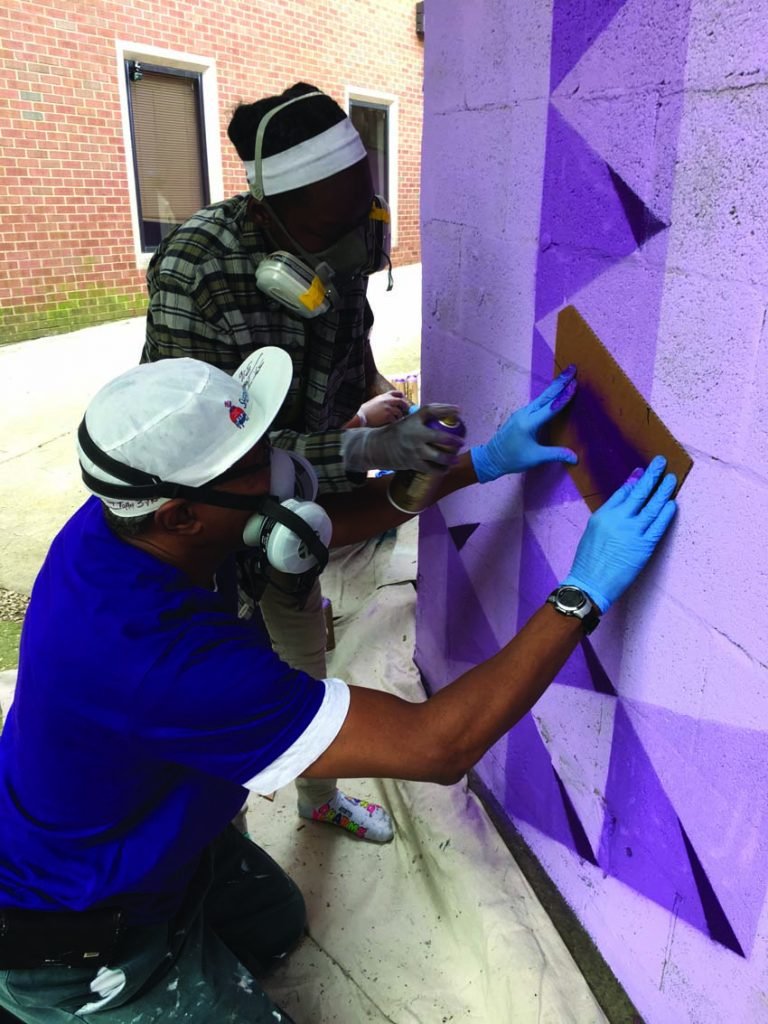
Pearl Bailey Mural Project, 2018, in collaboration with George “Lassie” Belt and Stanton Center youth, Whitmore Park, Annapolis (photo: Street Art Films) 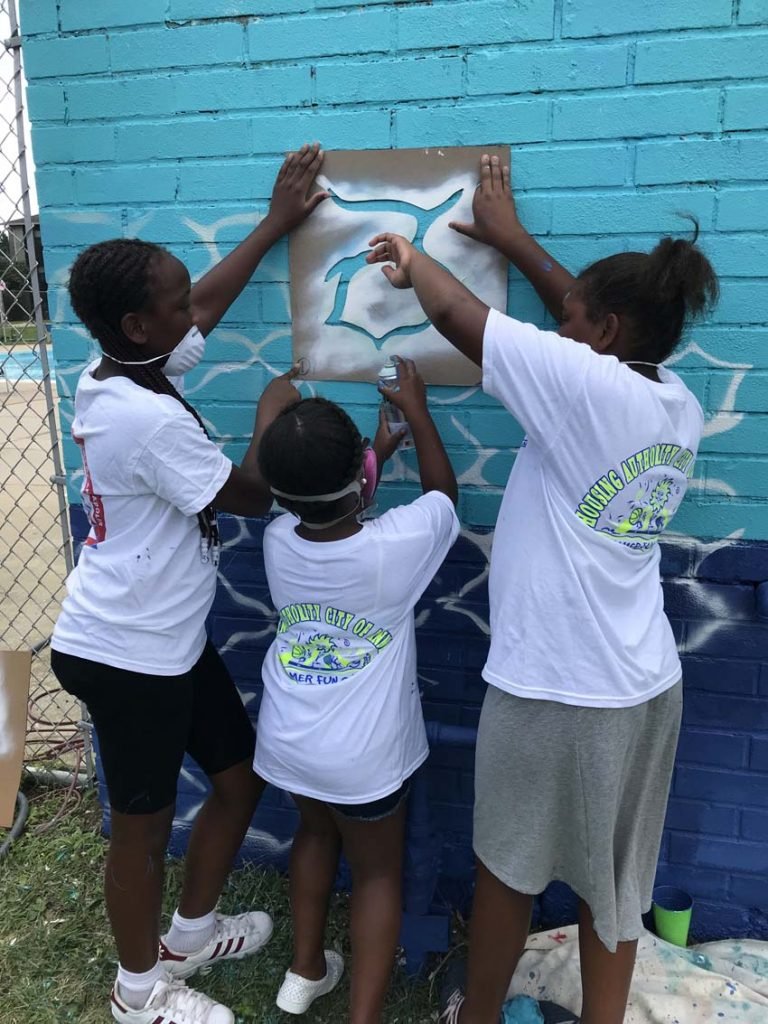
Pool Party Mural Project, 2018, in collaboration with Stephanie Baker, Elevate Church, and Eastport Community, Annapolis (photo: Julia Gibb) 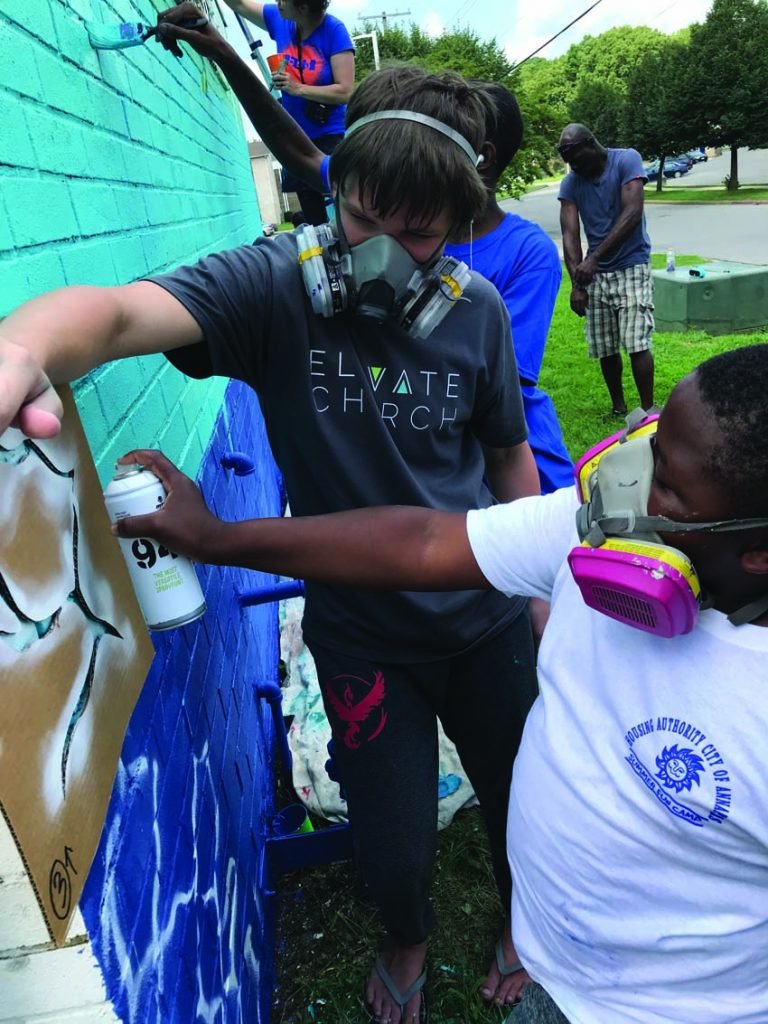
Pool Party Mural Project, 2018, in collaboration with Stephanie Baker, Elevate Church, and Eastport Community, Annapolis (photo: Julia Gibb) 
Dream Big Mural Project, 2018, in collaboration with Black Wall Street Annapolis, Newtowne 20, Annapolis (photo: Street Art Films) 
Freestyle Butterfly Strokes Mural Project, 2018, Pavia National High School, Iloilo, Philippines (photo: Louie Luzuriaga) 
José Rizal Mural Project, 2018, Pavia National High School, Iloilo, Philippines (photo: Jahru) 
Star Theater Mural Project, 2019, in collaboration with James Houlcroft and Stanton Center youth, Annapolis (photo: Street Art Films) 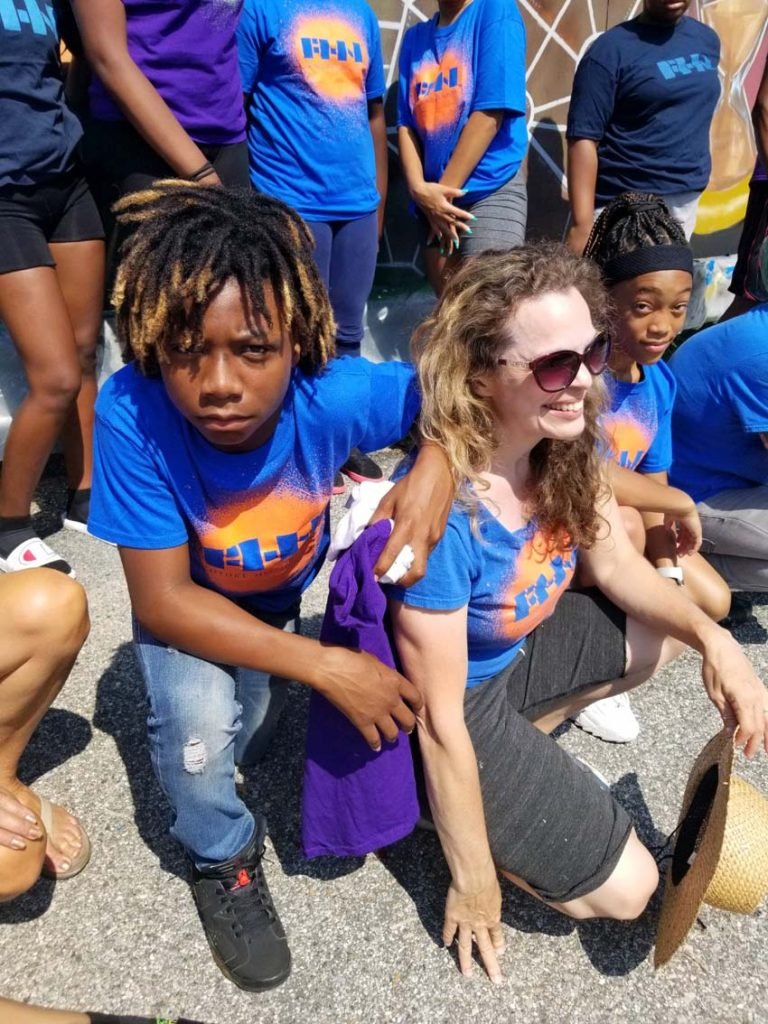
Julia and Anthony, Star Theater Mural Project, 2019, Annapolis (photo: Street Art Films) 
Star Theater Mural Project, 2019, in collaboration with James Houlcroft and Stanton Center youth, Annapolis (photo: Julia Gibb) 
Star Theater Mural Project, 2019, in collaboration with James Houlcroft and Stanton Center youth, Annapolis (photo: Julia Gibb) 
Star Theater Mural Project, 2019, in collaboration with James Houlcroft and Stanton Center youth, Annapolis (photo: Julia Gibb) 
Star Theater Mural Project, 2019, in collaboration with James Houlcroft and Stanton Center youth, Annapolis (photo: Julia Gibb) 
Star Theater Mural Project, 2019, in collaboration with James Houlcroft and Stanton Center youth, Annapolis (photo: Julia Gibb) 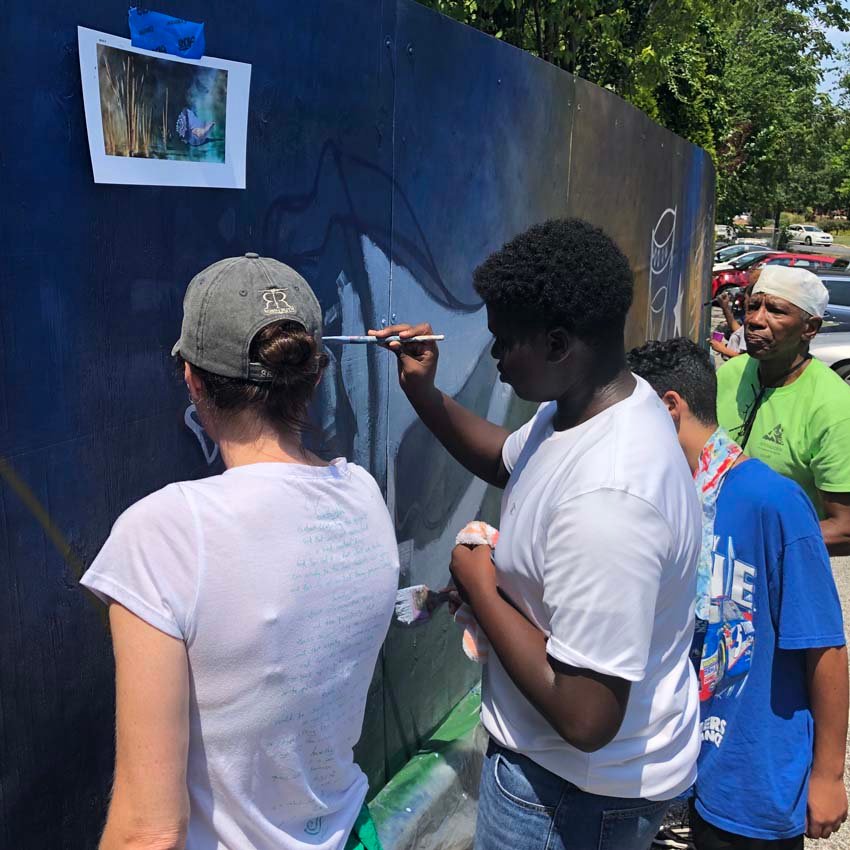
Star Theater Mural Project, 2019, in collaboration with James Houlcroft and Stanton Center youth, Annapolis (photo: Comacell Brown Jr.) 
Star Theater Mural Project, 2019, in collaboration with James Houlcroft and Stanton Center youth, Annapolis (photo: Comacell Brown Jr.) 
Star Theater Mural Project, 2019, in collaboration with James Houlcroft and Stanton Center youth, Annapolis (photo: Comacell Brown Jr.) 
Star Theater Mural Project, 2019, in collaboration with James Houlcroft and Stanton Center youth, Annapolis (photo: Comacell Brown Jr.) 
Laka, Goddess of Hula Mural Project, 2018, Kohala Artist Cooperative, Kapa’au, Hawai’i (photo: Julia Gibb)
